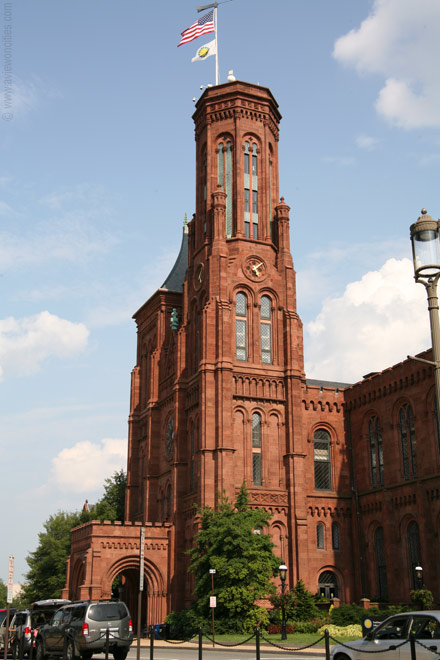I didn’t care what internship I got, just as long as I got
one there. The National Museum of
American History’s website listed the likely projects that each intern would be
working on and the required experience for each position. I applied to every single internship that I
even vaguely qualified for.
I was 19, a displaced Alaskan girl finishing up my first
year at the hippiest of hippy liberal arts schools, Antioch College in Yellow
Springs, Ohio. I had declared myself a History
major immediately and was shocked to find myself one of maybe four in the
school. I had some wild dream that I was
going to teach high-school history in rural villages on the West Coast of
Alaska.
It was 2002 and I wound up with an internship doing “object
processing” for the one year anniversary exhibit of 9/11.
“Four people applied, but I thought that since you were from
Alaska, you might be able to help more with some of these posters I collected,”
David explained when I arrived for my first day. I thought this was doubtful, but he seemed
pleased enough that I could find Kotzebue on a map without assistance.
With the eyebrows and voice of Eugene Levy, David’s lilting
monologues on the history of Crayola’s color names and the functionality of
silly putty were mesmerizing. He was
fascinated and fascinating. The project
David had brought me to work on, doing back-ground research and file building
for four items collected at Ground Zero took me about three weeks. For the next three months I was directed
along the path of the David Shayt School of Museum Studies, loaned out to anyone
who would have me.
It was clear within those first few weeks that my internship
was not like any of the other internships at the museum. Looking back, I’m certain David didn’t need
an intern, but rather delighted in sharing his own passion and wonder. He told me how he had always loved the Museum
of American History. He started out at
18 in the basement in the print-shop, back when all the materials for the museum
were printed on actual printing presses. He did a stint in the Marine Corps, went to college, but then he returned to the museum. He wanted to be a curator, but he didn’t have
a Ph.D., so instead he became an expert in all the things the museum didn’t
have an expert in: bell casting, ivory carving, silly putty, crayons, coffin
making, lunch boxes, wood-working tools, yo-yos, and on, and on, slowly building the
curator position he had always wanted.
He showed me Foucault’s Pendulum, tragically stored in a
wooden box. He let me touch Indiana
Jones’ hat. He sent me to spend three
weeks writing tiny catalog numbers on Julia Childs’ kitchen utensils. He sent me to the Library of Congress to do
photographic research, which then turned into my excuse to get a LOC library
card, granting me access into the holy of holies, the Jefferson Reading Room. He told me about Washington’s scandalous
nipple. He took me into the bowels of
the museum to see the old steam generators that used to pump life into the
various industrial machines on display when the museum had been called the Museum
of History and Technology.
 He was in charge of making sure the bell in the tower of “The
Castle” was in working order, so even though the entirety of the rooftops along
the mall had strictly become off-limits in the post-9/11 world, we were allowed. We would go up and eat our sandwiches in the
blessed breeze, looking down on the broad expanse of green grass and white marble.
He was in charge of making sure the bell in the tower of “The
Castle” was in working order, so even though the entirety of the rooftops along
the mall had strictly become off-limits in the post-9/11 world, we were allowed. We would go up and eat our sandwiches in the
blessed breeze, looking down on the broad expanse of green grass and white marble.
I came out of his care confused, questioning, dreaming, in
awe, and no longer a history major.
I ran into him six years later, surprisingly, in
Juneau. He had come up for a museum conference
that my boyfriend’s band was playing. I
had crashed the party. I recognized him
from across the room with his signature satchel bag and his smooth stride. He told me how enchanted he was by Juneau’s “gentle
sparkling streams.”
I think about David several times a year.
A few years ago I tried googling him to see if I could find
an address to send a letter to him, to check in, to thank him for a strange and
wonderful summer, but instead I found an obituary. So I wrote a letter to his wife, sent to what
appeared to be her work address, trying to let her know that her husband had
touched my life in a way that I couldn’t explain. How sorry I was for her family.
How sorry I was that I had never told him.

Erin, I am deeply touched by your whimsical and moving writing. Beautiful experience...and fun to picture you in the bell tower.
ReplyDeleteThank you for writing this!!
ReplyDelete-David's daughter
Emma Shulevitz
7layercatering@gmail.com
Hi Emma,
DeleteThank you so much for leaving this comment. I didn't know your dad well or for very long but I am so thankful for the strange and sort of magical summer he gave me. I feel like I've really only recently started to realize how much of an impact he had on me. I have a feeling that he touched a lot of people in the same way. Thank you for sharing him. :)
Best,
Erin